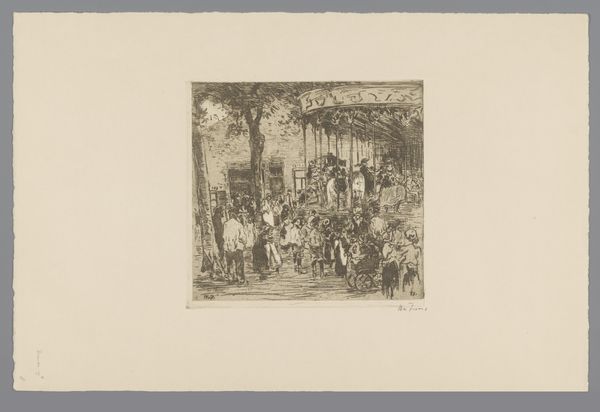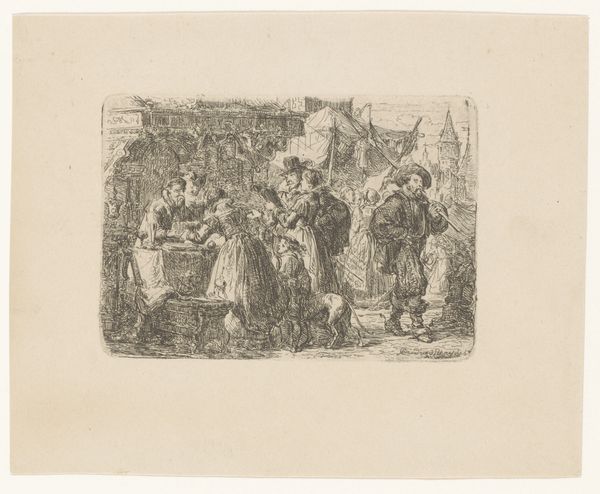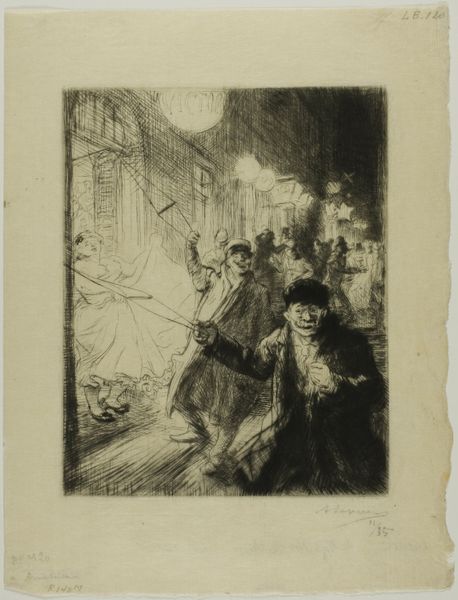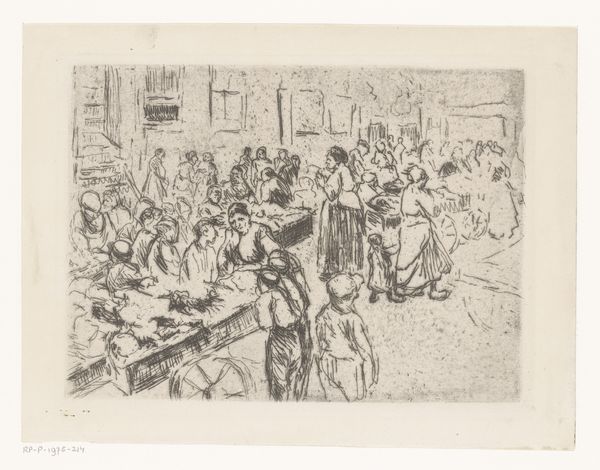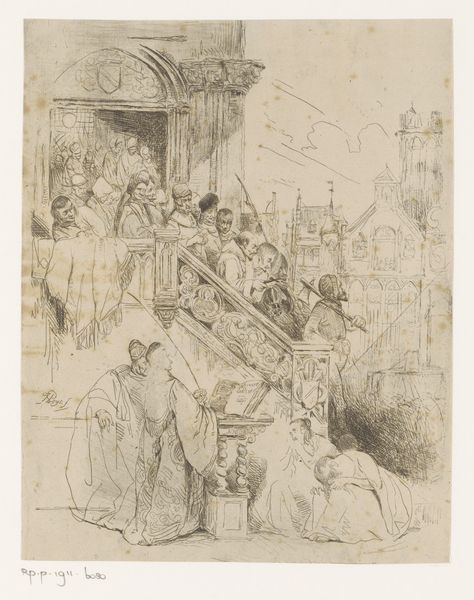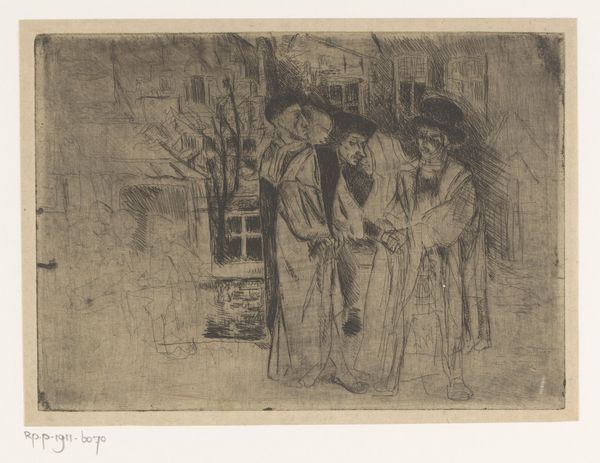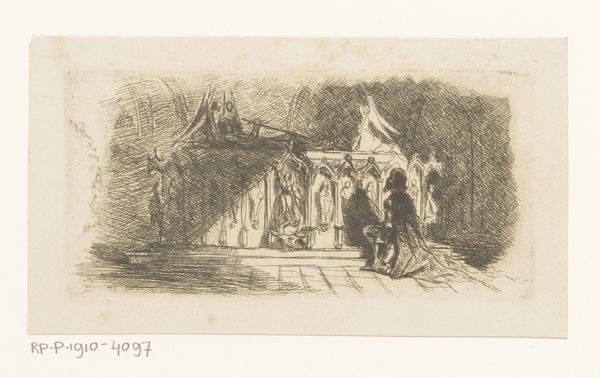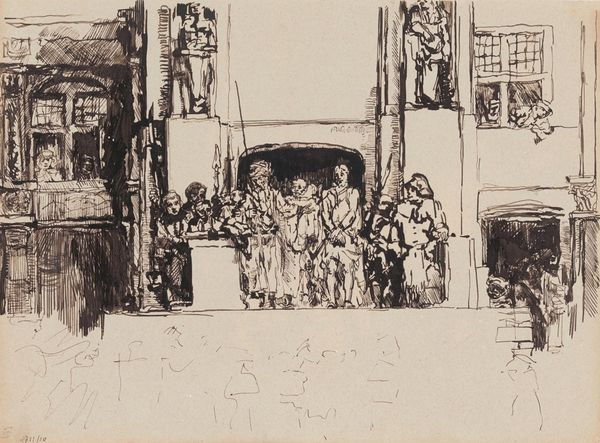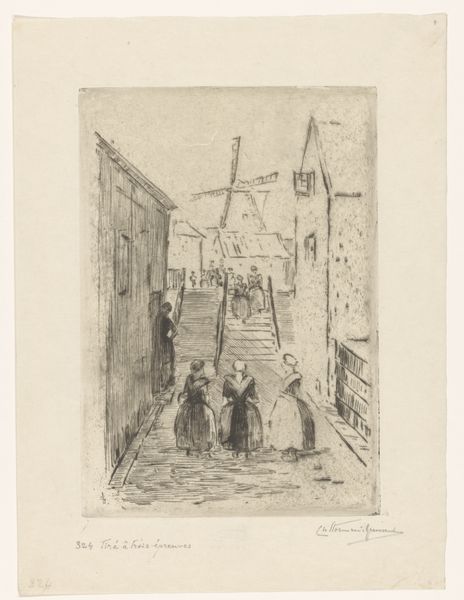
Dimensions: height 214 mm, width 227 mm
Copyright: Rijks Museum: Open Domain
Curator: Willem de Zwart created "Kermis met draaimolen," or "Fair with Carousel," in 1924. It's an etching on paper. Editor: It feels frenetic, yet muted. The whole scene is bustling with figures but rendered in these soft, blurred lines. It almost feels like a dream, doesn't it? Curator: It really captures a specific slice of Dutch society during the interwar period. De Zwart was keenly interested in depicting everyday life, and this print shows how leisure and recreation became more accessible. Circuses and fairs transformed into spectacles for the masses. Editor: What strikes me most is how he achieves this feeling of movement simply through line work. Look at the carousel—the circular motion is implied rather than explicitly stated. The diagonal hatching across the top lends this dynamism as well. The depth and volume are skillfully achieved through those subtle tonal variations, despite it being just line work. Curator: And consider the deliberate placement of figures. He's inviting the viewer into this accessible entertainment of the era, as such leisure activities also began to permeate collective and national identity. This form of public gathering promotes interaction and, to some extent, shared values. Editor: I think there’s more than that! It also captures the transient nature of these gatherings, doesn't it? A moment frozen in time. This reminds me of how much Manet or Degas tried to encapsulate this specific sensation too. Curator: You’re right. Even a seemingly innocuous print holds a mirror to larger societal shifts and the changing role of the urban environment. Editor: It's deceptively complex. Its visual vocabulary offers a real feast for the eye!
Comments
No comments
Be the first to comment and join the conversation on the ultimate creative platform.
